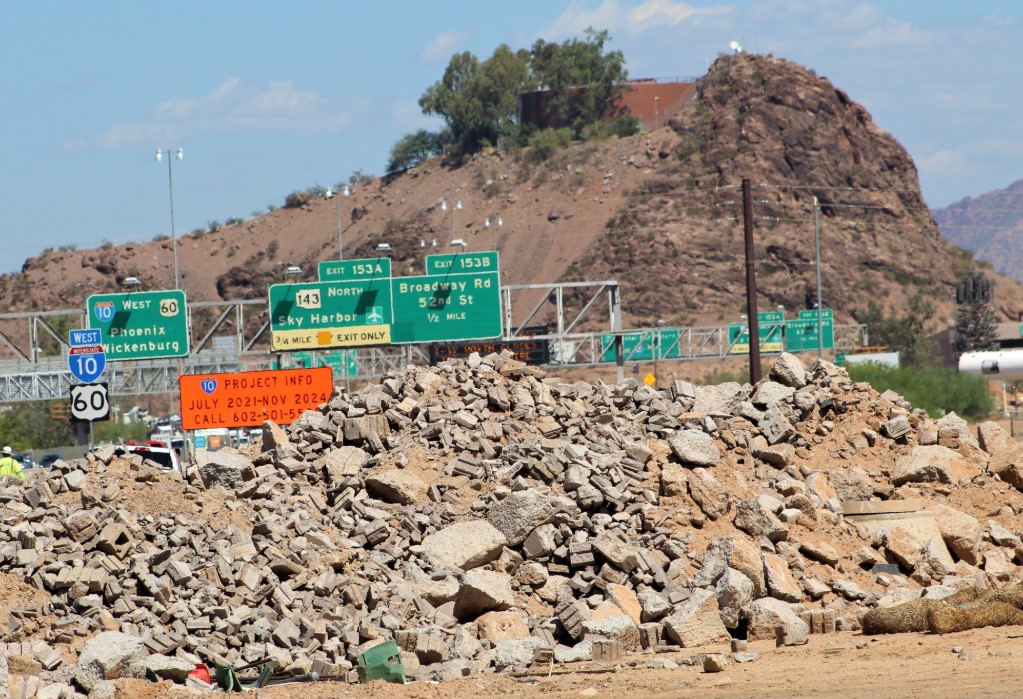Waste Not: Reusing materials from the past to build for the future
Waste Not: Reusing materials from the past to build for the future

Reduce, reuse and recycle: They’re key to protecting natural resources and lessening the amount of trash in our landfills. They’re also an important part of the Interstate 10 Broadway Curve Improvement Project.
"We reuse as much as we can so nothing goes to waste,’ said Kole Dea, P.E., senior resident engineer with the Arizona Department of Transportation. “If something can’t go back into the project, then it’s recycled.”
Asphalt millings, concrete, metal and steel are the most common types of waste; but the project team has future plans for all of them.
Asphalt Millings
The black material you see piled up in the work zone are asphalt millings. When construction began in summer 2021, crews removed the rubberized asphalt from the surfaces of I-10 and US 60 in the project area. That work created 1.3 million square yards of millings, which are being used as the base layer for temporary haul roads in the project area. Millings provide a strong base for trucks and equipment to drive on, and they reduce dust - another plus for the environment. Millings can also be mixed in with dirt to build embankments that will support the roadway. Outside of the project area, ADOT uses millings on its maintenance roads in unpaved areas.
Concrete
As walls and other concrete structures are taken down to make way for new construction, they’re broken up so they can serve a new purpose. Crews use equipment to break each piece into sizes no larger than 24 inches.Those pieces are used as fill to build up approaches for new bridges, and can be used to fill in holes or otherwise supplement unstable materials in the project area.
Metal and Steel
Metal and steel products are major components of highway infrastructure, inside and out. In addition to what you can see, they’re also used to reinforce concrete girders and other structures, and strengthen walls. Steel rebar and other materials are broken down and taken to a recycling facility. Fun fact:
Recycled steel is as strong and durable as new steel made from iron ore.
ADOT works in compliance with state and federal regulations to ensure reused materials do not pose a threat to the environment. Careful testing confirms that the paint stripes on milled asphalt don’t contain lead, and that old pipes or bridge structures are free from asbestos.
As new roadways, ramps and bridges take shape throughout the Broadway Curve work zone, remember how important the infrastructure from the past is to building for the future.
